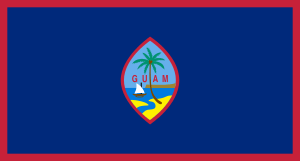George Leland Dyer
| George Leland Dyer | |
|---|---|
| 6th Naval Governor of Guam | |
|
In office May 16, 1904 – November 2, 1905 | |
| Preceded by | William Elbridge Sewell |
| Succeeded by | Luke McNamee |
| Personal details | |
| Born |
August 26, 1849 Calais, Maine |
| Died |
April 2, 1914 (aged 64) Winter Park, Florida |
| Nationality |
|
| Military service | |
| Allegiance |
|
| Service/branch |
|
| Years of service | 1871–1908 |
George Leland Dyer (August 26, 1849 in Calais, Maine – April 2, 1914 in Winter Park, Florida) was an American naval commander and the Governor of U.S. territory of Guam. In 1870, he graduated from the United States Naval Academy with honors and began his career in the United States Navy.[1] During his career, he commanded the Stranger (1898), the Yankton (1898–1901), the Rainbow (1902–1903), and the Albany (1903–1904).
From 1904-1905, he served as Governor of Guam.
In 1908, he was promoted to Commodore and retired that year.
He lived in Winter Park, Florida until he died on April 2, 1914.[2]
Authorship
- Translated Practical Hints in Regard to West Indian Hurricanes from Spanish in 1885[3]
- Wrote The Use of Oil to Lessen the Dangerous Effect of Heavy Seas in 1886[4]
- Published an article in National Geographic magazine entitled Geography of the Sea in 1889.[5]
References
- ↑ Lewis Randolph Hamersly (1898). The Records of Living Officers of the U.S. Navy and Marine Corps. Retrieved March 26, 2009.
- ↑ "Guide to the George Leland Dyer Papers, 1783-1930, (bulk 1862-1930) (Manuscript Collection #340)". East Carolina University. Retrieved 26 March 2009.
- ↑ Practical hints in regard to West Indian hurricanes. Retrieved 2009-03-26.
- ↑ The Use of Oil to Lessen the Dangerous Effect of Heavy Seas. Retrieved 2009-03-26.
- ↑ Geography of the Sea. Retrieved 2009-03-26.
| Military offices | ||
|---|---|---|
| Preceded by William Elbridge Sewell |
Naval Governor of Guam 1905–1906 |
Succeeded by Luke McNamee |
This article is issued from Wikipedia - version of the 10/15/2016. The text is available under the Creative Commons Attribution/Share Alike but additional terms may apply for the media files.
